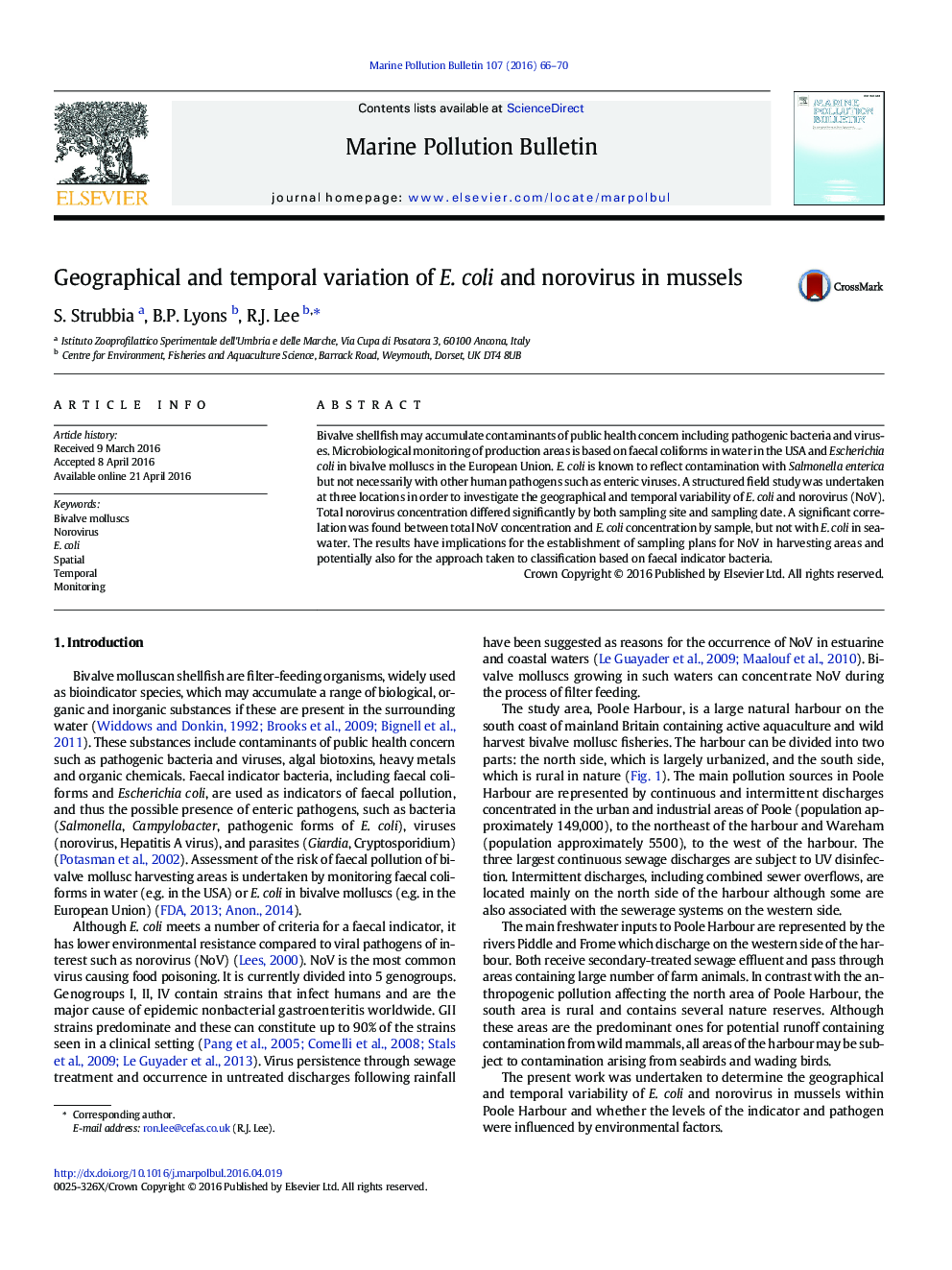| Article ID | Journal | Published Year | Pages | File Type |
|---|---|---|---|---|
| 6356158 | Marine Pollution Bulletin | 2016 | 5 Pages |
Abstract
Bivalve shellfish may accumulate contaminants of public health concern including pathogenic bacteria and viruses. Microbiological monitoring of production areas is based on faecal coliforms in water in the USA and Escherichia coli in bivalve molluscs in the European Union. E. coli is known to reflect contamination with Salmonella enterica but not necessarily with other human pathogens such as enteric viruses. A structured field study was undertaken at three locations in order to investigate the geographical and temporal variability of E. coli and norovirus (NoV). Total norovirus concentration differed significantly by both sampling site and sampling date. A significant correlation was found between total NoV concentration and E. coli concentration by sample, but not with E. coli in seawater. The results have implications for the establishment of sampling plans for NoV in harvesting areas and potentially also for the approach taken to classification based on faecal indicator bacteria.
Related Topics
Physical Sciences and Engineering
Earth and Planetary Sciences
Oceanography
Authors
S. Strubbia, B.P. Lyons, R.J. Lee,
